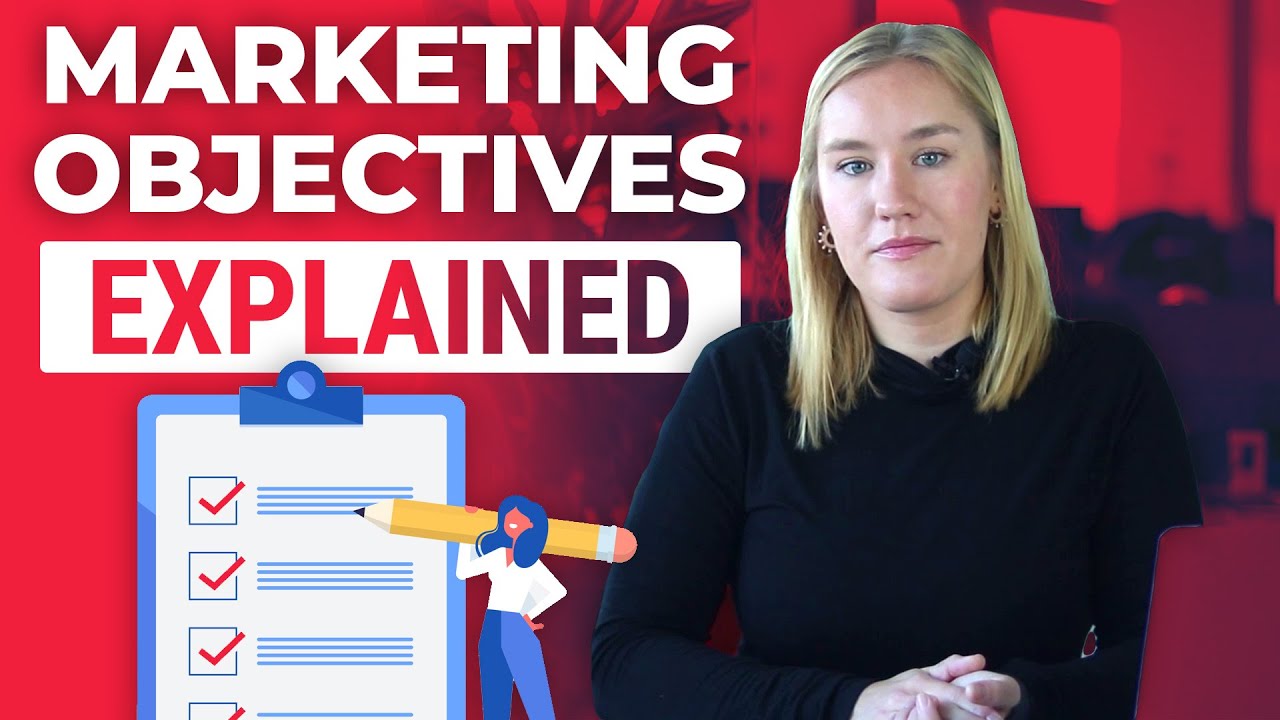In Digital Marketing
Marketing Objectives Explained | 10 Examples! - read the full article about web marketing, Digital Marketing and All digital inbound channels from Inbound Explained • Digital Marketing on Qualified.One

Youtube Blogger

In marketing, your objectives and goals are the pillars that guide all of your actions and strategies. If you don’t set any objectives, you don’t know what direction you should go in, or how to do it.
But, sometimes you need a little inspiration to come up with your objectives. In this video, we’ll explain what marketing objectives are and share 10 examples you can use in your next marketing plan.
Hi! My name is Kylie and welcome to Inbound Explained! Normally on this channel we like to stick to Inbound Marketing, but marketing objectives are crucial for all marketing strategies, whether its inbound, social media, email marketing, or more.
So, what exactly is a marketing objective? Marketing objectives are the actions you and your marketing team take to fulfill your marketing goals.
Keep in mind that marketing goals and marketing objectives are two different things. Marketing goals are long term, expansive, and are often inspired by the mission and purpose of a company.
On the other hand, marketing objectives are more specific in scope and should be measurable, either using numbers or time frames, or both.
Remember that your objectives need to be SMART. This means they should be Specific, Measurable, Achievable, Realistic, and Time-bound.
Let’s review 10 examples of marketing objectives! Example 1: Increase Brand Awareness Whether you’re a new company, you’re launching a new product, or you’ve decided to target a new audience, increasing your brand or product’s awareness is a good objective to guide your marketing plan.
If you want to increase brand awareness, an example objective could be “Increase social media impressions among new target audience by 30% by the end of the quarter.” Example 2: Increase Market Share By taking a look at the other existing brands in your industry, you can define your specific position in the market, as well as project where you would like to be after your campaign.
Remember, your objective does not always have to be “to become the market leader, since it may not be a realistic objective.
For example, a possible objective could be to “Increase market share by the end of the fiscal year by decreasing customer churn by 10%.” Example 3: Launch a New Product Launching a new product is no small feat. Between developing the communication strategy, pricing, and positioning, this goal can have several different objectives.
An example objective could be to “Define the new product’s final price by the end of the week.” Example 4: Introduce the Company to New Local or International Markets Introducing your brand to a new market requires a solid positioning and communication strategy.
It’s also crucial to be knowledgeable about cultural and consumption differences as well.
If you want to open your brand to a new market, a possible objective could be to “Conduct market research during the first half of Q2 and develop an appropriate messaging strategy by the end of Q2.” Example 5: Improve ROI ROI is one of the most important marketing metrics there is, since it measures whether your investment is paying off.
Now it’s easier than ever to accurately measure ROI, with tools like Google Ads and Facebook Ads. There are several different ways a company can increase their ROI, thus this goal can have a few different objectives.
One example objective could be to “Conduct A/B testing on two different Facebook Ads over a 4 week period.” Example 6: Increase Company Profits Typically increasing company profits involve 3 different types of actions: reducing costs, increasing profits, or both.
An example of this objective could be “Reduce paid social ads by 20% and boost current SEM efforts with 3 weekly blog posts in Q4.” Example 7: Optimize the Funnel If you’re getting tons of impressions, but no conversions, then it may be a good idea to try to optimize your funnel.
A good objective could be to “Increase conversion rates by 5% in 2021 by increasing remarketing efforts on middle of the funnel (MOFU) prospects.” Example 8: Attract New Customers Attracting new customers to your brand helps ensure the relevancy and longevity of your company.
A possible objective could be to “Establish partnerships with 3 new industry influencers by the end of the year and develop discount codes for their followers.” Example 9: Retain Current Customers On the other side of the coin, increasing customer loyalty is another common marketing objective.
An example of this objective could be to “Add 2 full-time community managers by Q3 to better manage comments and questions received on social media.” 10. Increase Sales Finally, we’ve reached the most common marketing objective: improving sales. There are many different methods for increasing sales, but two popular actions are to increase conversion rates or increase the average amount of transaction options.
A possible objective could be to “Increase conversion rates by 3% by increasing website traffic with 3 new blog posts a week by the end of the year.” Marketing objectives and marketing goals can be a tricky concept, since the words are so often switched around, but hopefully this video has cleared it up a bit and inspired your next marketing plan! If you enjoyed this video, or want to learn more about Inbound Marketing or Marketing, then click the subscribe button. We’ll see you in the next video!
Inbound Explained • Digital Marketing: Marketing Objectives Explained | 10 Examples! - Digital Marketing

